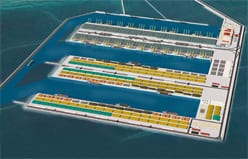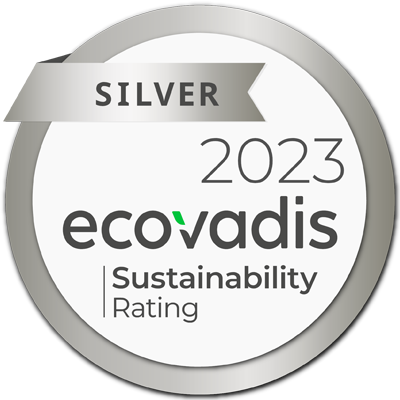Port Name: Khalifa Port
Location: United Arab Emirates
Owner: ADPC – Abu Dhabi Ports Company
Cranes Maker: Konecranes
Reeling Manufacturer: Cavotec SPECIMAS
Cable: TratosFlex ES-DB
Date of installation: 2012
Tratos & ADPC cooperation
Tratos was pleased to supply its Tratosflex-ESDB® cable to be used in the cranes operating in the Khalifa Port. Tratosflex-ESDB is ideal for container cranes such as these, which operate at speeds up to 300 mt/m, as it has been designed to combat the common problem of twisting that affects cables reeling at high speed.
Abu Dhabi Ports Company – ADPC
Formed by the Abu Dhabi Government in 2006, ADPC is a master developer and manager of ports and industrial zones in U.A.E. ADPC’s Khalifa Port development is an infrastructural landmark that will support the development of KIZAD as a major industrial zone in the region. It features the latest technology and is designed to accommodate the largest ships. When ready the new port will have an initial capacity of two million TEUs.
Abu Dhabi Ports Company (ADPC) in the United Arab Emirates has awarded Konecranes a contract for an automated container yard system. The order includes 30 automated stacking cranes (ASC) and a container terminal operating system (TOS). The value of the order is over EUR 80 million. The cranes will be taken into operation in the new Khalifa Port in two phases: 14 cranes by the end of March 2012 and 16 by the end of June 2012.
Khalifa Port, strategically located halfway between Abu Dhabi and Dubai, was officially inaugurated on 12.12.12 by the President of the UAE, His Highness Sheikh Khalifa bin Zayed Al Nahyan.
The deep-water port is the first semi-automated container port in the GCC region.
Construction of the port was carefully planned to keep environmental impact to an absolute minimum.
Khalifa Port
Khalifa Port’s 8-km long breakwater, the longest in the Middle East, allows the Gulf’s currents to flow freely, while protecting and preserving the local marine ecosystem.
Owned by Abu Dhabi Ports, the port handles general cargo, container, roll-on and roll-off (RoRo) as well as break-bulk activities.
Connectivity is at the core of Khalifa Port’s uniqueness. It serves over 25 shipping lines, offers direct links to 70 international destinations, and boasts an intermodal transport network facilitating efficient transportation and logistics across sea, road and air. The port will also be the first in the UAE to be linked to the new Etihad Rail network, which is currently under construction.
Khalifa Port features state-of-the-art maritime infrastructure, including twelve of the world’s largest ship-to-shore quay cranes, 42 automated stacking cranes and 20 straddle carriers. With the ability to serve the largest ships at sea, and flexibility for future expansion, the port also currently allows the handling of all of Abu Dhabi’s container traffic with an annual capacity of 2.5 million TEUs and 12 million tons of general cargo.
Tratos supports sustainable developments of ports infrastructure
Tratos is very pleased to supply its high-quality cables to the ports around the world. In doing so, Tratos supports the global endeavours of port authorities in upgrading and improving their operational capabilities, which contributes to the sustainable development of ports and achieving the 17 UN Global Goals.
With this project Tratos has support:
#Envision2030 Goal 3: Good Health and Well-being
By 2030, substantially reduce the number of deaths and illnesses from hazardous chemicals and air, water and soil pollution and contamination
#Envision2030 Goal 8: Decent Work and Economic Growth
- Achieve higher levels of economic productivity through diversification, technological upgrading and innovation, including through a focus on high-value added and labour-intensive sectors
- Improve progressively, through 2030, global resource efficiency in consumption and production and endeavour to decouple economic growth from environmental degradation, in accordance with the 10-year framework of programmes on sustainable consumption and production, with developed countries taking the lead
#Envision2030 Goal 11: Sustainable Cities and Communities
- By 2030, significantly reduce the number of deaths and the number of people affected and substantially decrease the direct economic losses relative to global gross domestic product caused by disasters, including water-related disasters, with a focus on protecting the poor and people in vulnerable situations
#Envision2030 Goal 14: Life Below Water
Targets
- By 2025, prevent and significantly reduce marine pollution of all kinds, in particular from land-based activities, including marine debris and nutrient pollution
- Minimize and address the impacts of ocean acidification, including through enhanced scientific cooperation at all levels










